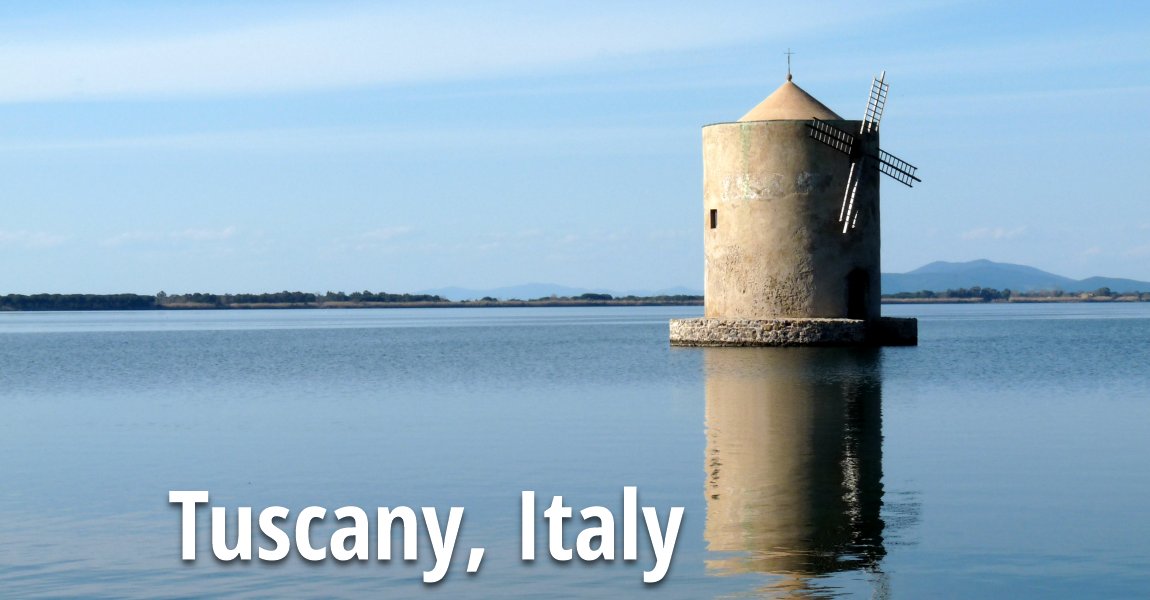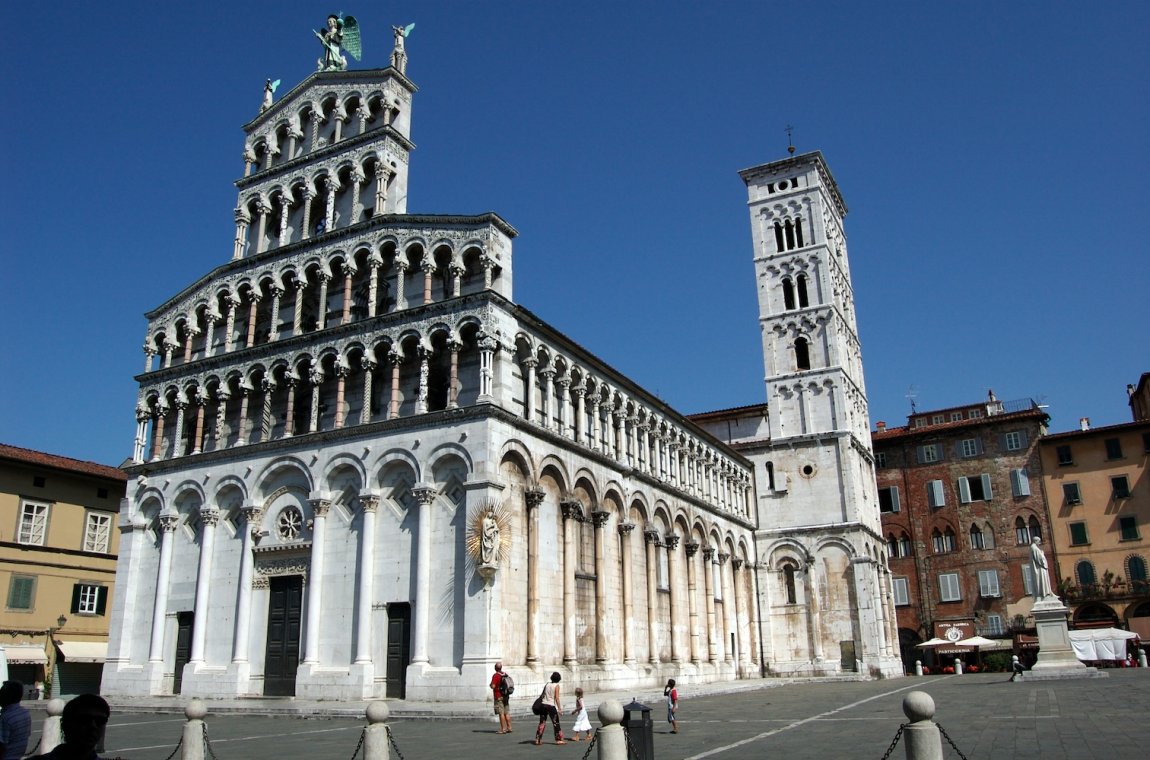 Orbetello Windmill, Tuscany
Orbetello Windmill, TuscanySource: https://commons.wikimedia.org/wiki/File:OrbetelloWindmill.jpg
Author: Lorena Torres Angelini

Tuscany is a region on the central western part of Italy. It covers 22,993 sq km (8,878 sq mi) and has a population of 3.75 million people (2012 estimate). The biggest city and regional capital is Florence.
Tuscany is renowned for its picturesque landscapes. It is often considered the birthplace of Italian Renaissance. The region produced many famous people including Michelangelo, Leonardo da Vinci, Galileo and Amerigo Vespucci, among others.
Tuscany is roughly triangular in shape. It shares a border with Liguria to the northwest, Emilia-Romagna to the north, Marche and Umbria to the east and Lazio to the southeast. Tuscany faces the Ligurian Sea to the west.
The Tuscany area has been inhabited since the late Bronze and Iron Ages. In the late second millennium BC (approximately 1350-1150 BC), the Apennine culture developed in the area. They were replaced by the Villanova culture (1100-700 BC). Towards the late Villanovan period, city-states began to develop. They in turn were replaced by the Etruscan from the 8th century BC, reaching their peak in the 7th and 6th centuries BC, before being overtaken by the Romans in the 1st century AD.
It was during the Roman period that the main cities of Tuscany were established, among them Lucca, Pisa, Siena and Florence. Eventually the Roman civilization collapsed in the 5th century. Filling the vacuum were the Goths, and a century later, the Longobards.
During the Medieval Period, in the 12th and 13th centuries, the Tuscan people were split into two camps, those supporting the Papacy and those supporting the Holy Roman Empire. At the same time, the medieval communes of Tuscany grew rich and powerful, among them Arezzo, Florence, Lucca, Pisa and Siena. However the Black Death struck Tuscany in 1348, killing over half its population.
Tuscany, and in particular the city of Florence, is regarded as the birthplace of the Renaissance. Under the rule of the Medici family, the power of Florence grew during this period, the 14th to 15th centuries, enabling it to annex Arezzo in 1384, purchase Pisa in 1405 and Livorno in 1421. It finally slipped out of the rule of the Medicis in the 1730s, and into the hands of Francis, Duke of Lorraine and Holy Roman Empire.
 Church of San Michele in Faro, Lucca, Tuscany
Church of San Michele in Faro, Lucca, TuscanySource: https://commons.wikimedia.org/wiki/File:San_Michele_in_Foro.jpg
Author: Goldmund100

When Napoleon dissolved the Holy Roman Empire, Tuscany came under Austrian rule. It then became part of the unified nation of Italy in the 1850s.
Tuscany on the map
There are two main international airports, the Florence Airport Amerigo Vespucci and the Pisa International Airport Galileo Galilei. There are also extensive railway connections linking Florence, Pisa and Grosseto with major destinations in Europe.Cities in Tuscany
- Florence - regional capital
- Arezzo
- Asciano
- Barberino Val d'Elsa
- Camaiore
- Capoliveri
- Castellina in Chianti
- Castelnuovo Berardenga
- Castiglione della Pescaia
- Chianciano Terme
- Chiusi
- Empoli
- Follonica
- Grosseto
- Lucca
- Massa
- Montepulciano
- Pienza
- Piombino
- Pisa
- Portoferraio
- San Gimignano
- Siena
- Viareggio
World Heritage Sites in Tuscany
- Cathedral Square of Piza (1987)
- Historic Center of Florence (1982)
- Historic Center of Pienza (1996)
- Historic Center of San Gimignano (1990)
- Historic Center of Siena (1995)
- Val d'Orcia (2004)
 Latest updates on Penang Travel Tips
Latest updates on Penang Travel Tips

Copyright © 2003-2025 Timothy Tye. All Rights Reserved.

 Go Back
Go Back